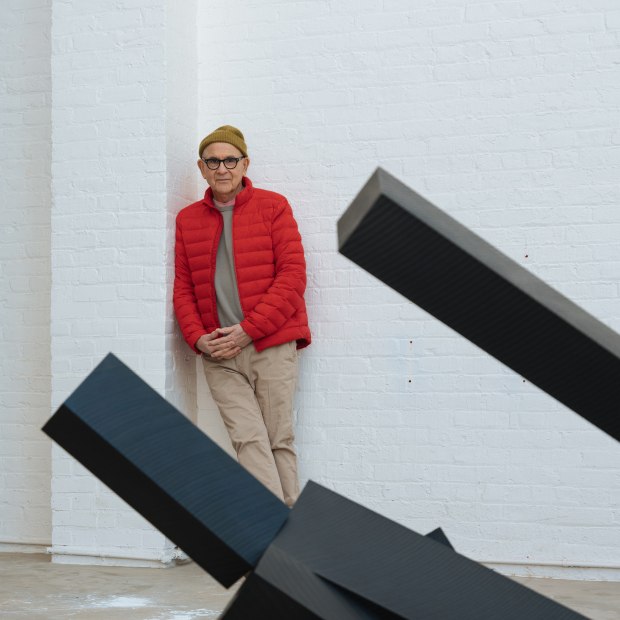Joel Shapiro: Four Bronzes: Meridiano, Puerto Escondido, Mexico
-
-

Joel Shapiro, Untitled, 2021
-

Joel Shapiro, Untitled, 2013
-
“I was immediately struck by the sensitivity of Meridiano’s architecture to the site and surrounding landscape, as well as the raw, natural beauty of both,” said artist Joel Shapiro. “It is deeply gratifying to be able to install my sculptures in a place where they will be in dialogue not only with the sublime architecture but also with the natural environment.”
Gestalt psychology tells us that people perceive collections of objects, shapes, and forms as whole rather than separate entities. This effect exists not only in Shapiro’s individual sculptures but also in their proximity to one another. The characteristic poses of Shapiro’s sculptures are animated by placement. For example, how one appears to reach upward, treelike in its extension, as the other falls, limbs suspended as they shatter into the ground. Each appears ready to be identified as either figures, as a collection of bodies communing with one another, or a sum of its parts, as planes dissolving into a field of harmonious cubic abstractions. His sculptures remain on the verge, never claiming to belong to just one category, but dynamically lingering in the balance of both to question how we see geometry in connection to the world and ourselves.
-
-
About the Artist
 The artist in his studio, Photograph by Charlie Rubin.
The artist in his studio, Photograph by Charlie Rubin. -
About the Gallery
 Meridiano, Puerto Escondido, Oaxaca, Mexico
Meridiano, Puerto Escondido, Oaxaca, Mexico -
Join our Newsletter
* denotes required fields
We will process the personal data you have supplied in accordance with our privacy policy (available on request). You can unsubscribe or change your preferences at any time by clicking the link in our emails.
-
Explore
-

Alma Allen
May 16 – June 22, 2024 509 West 27th Street, New YorkThe gallery’s third solo exhibition of work by Alma Allen (b. 1970) brings together new freestanding sculpture and wall reliefs. This body of work evolves various compositional and material directions explored in Allen’s recent site-specific solo exhibition Nunca Solo at Museo Anahuacalli in Mexico City, demonstrating the artist’s ongoing experimentation into the ability of matter to embody contemplations on free will, consciousness, and the nature of time. -

NARES TRACES
May 16 – June 22, 2024 297 Tenth Avenue, New YorkThe fifteenth solo exhibition at the gallery of work by multidisciplinary artist Jamie Nares (b. 1953) examines over 100 works on paper in a variety of media—namely oil, ink, and enamel—made after refocusing her artistic attention from film to painting in the early 1980s. Coolly perceptive, Nares’ works on paper share the same conceptual focus on movement, rhythm, and measurements of time that has driven the artist’s various bodies of work over the last fifty years. This exhibition points to paper as an essential instrument in Nares’ ongoing exploration of these themes.
-
-
Explore
- Diana Al-Hadid
- Alma Allen
- Theodora Allen
- Sara Anstis
- Ali Banisadr
- Tina Barney
- Judith Bernstein
- JB Blunk
- Mattia Bonetti
- William N. Copley
- Cynthia Daignault
- Ian Davenport
- Max Ernst
- Liam Everett
- Leonor Fini
- Barry Flanagan
- Walton Ford
- Jane Freilicher
- vanessa german
- Daniel Gordon
- Alexander Harrison
- Elliott Hundley
- Lee Krasner
- Les Lalanne
- Matvey Levenstein
- Lyn Liu
- Robert Motherwell
- Jamie Nares
- Nengi Omuku
- Robert Polidori
- Elliott Puckette
- Alexis Ralaivao
- George Rickey
- James Rosenquist
- Mark Ryden
- Jan-Ole Schiemann
- Joel Shapiro
- Bosco Sodi
- Dorothea Tanning
- Naama Tsabar
- Bernar Venet








